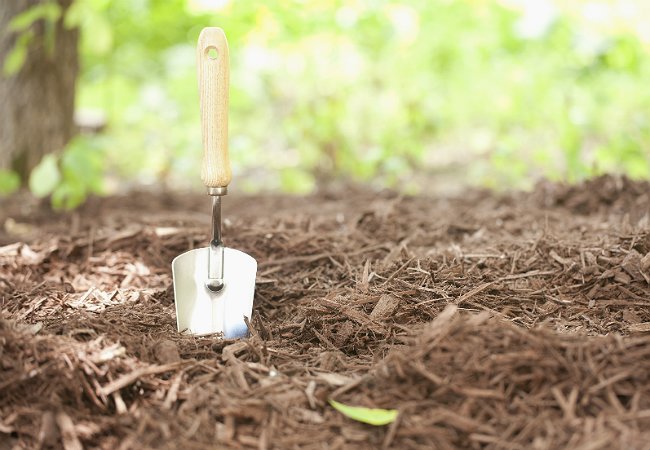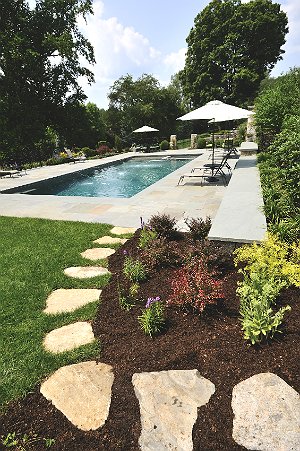

We may earn revenue from the products available on this page and participate in affiliate programs. Learn More ›
Treating your trees, garden, and landscaping beds to mulch helps retain soil moisture, suppress weeds, and arm plants against extreme temperatures—plus, it makes these features look fresh and well groomed.
Organic mulch has the added benefit of encouraging helpful garden organisms like earthworms and returning nutrients to the soil as it decomposes. But there’s no need to buy the stuff! You can learn how to make mulch from yard waste you might otherwise haul away. Whether you mulch in the spring or in the fall, follow this plan to save money and use the planet’s resources efficiently.
Tools & Materials
Bobvila.com may earn a commission from purchases made through these links.

Step 1
To make mulch out of fallen leaves, turn to your trusty lawnmower for shredding power—without it, they’re bound to blow away. Rake them into piles and run over them several times with the mower. (To beef up leaf mulch, you can mix in grass clippings before chopping with the mower.) Aim for pieces are about the size of a dime. The leaf mulch is now ready to use, but if you have wood material on hand, proceed to the next step.
Step 2
If you’ve pruned trees or had branches come down during a storm, put this wood to good use by adding it to your leaf mulch. Wood chips decompose more slowly than leaves, so wood mulch requires less care and can extend the aesthetic appeal of mulch in your yard.
To make mulch from wood, rent a wood chipper for about $75 a day—a worthwhile investment when you consider that mulch can cost from $22 to $30 a yard. (One cubic yard of mulch will cover an 80-square-foot area at a 4-inch depth.) Follow the manufacturer’s instructions on the chipper to turn twigs and branches into small pieces. Once you’ve converted your stash, add to leaf mulch and mix it together with a shovel or pitchfork.
Step 3
Now that your mulch is good to go, keep these two crucial tips in mind for making it work harder for you, protecting and pampering your landscape:
- Weed first, or unwanted greenery will benefit from the nutrient-rich mulch, too!
- Mulch planting beds and trees at a depth of 3 to 4 inches. Avoid piling mulch up around the base of trees and the crowns of plants, which inhibits oxygen flow and could potentially cause them to suffocate and rot.
Going forward, plan ahead to make mulch, not waste! Your landscape will love you for it.
